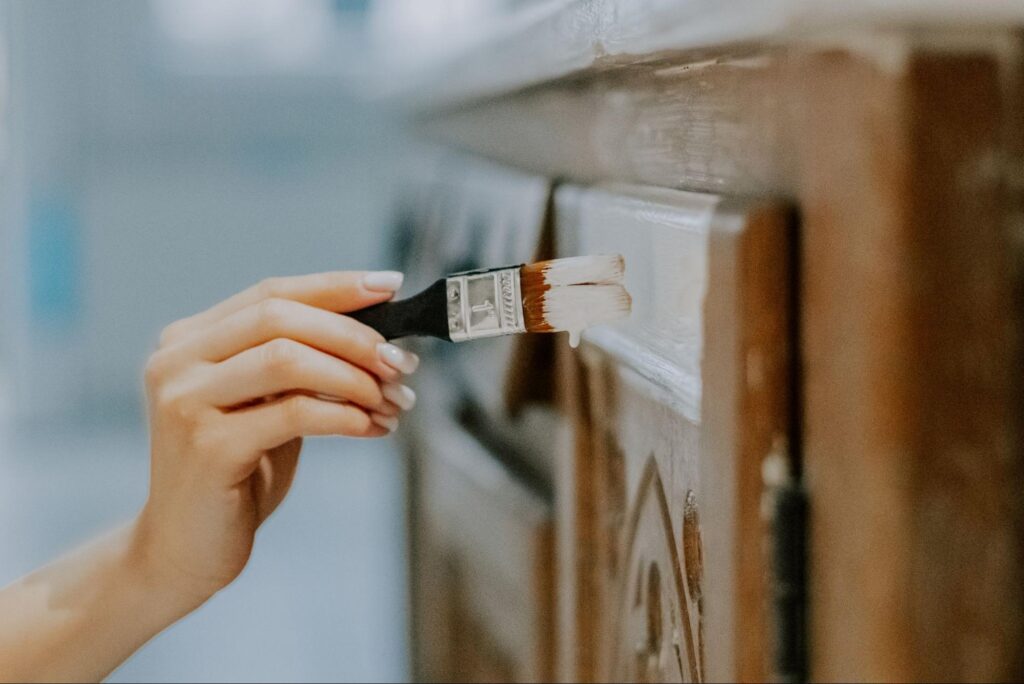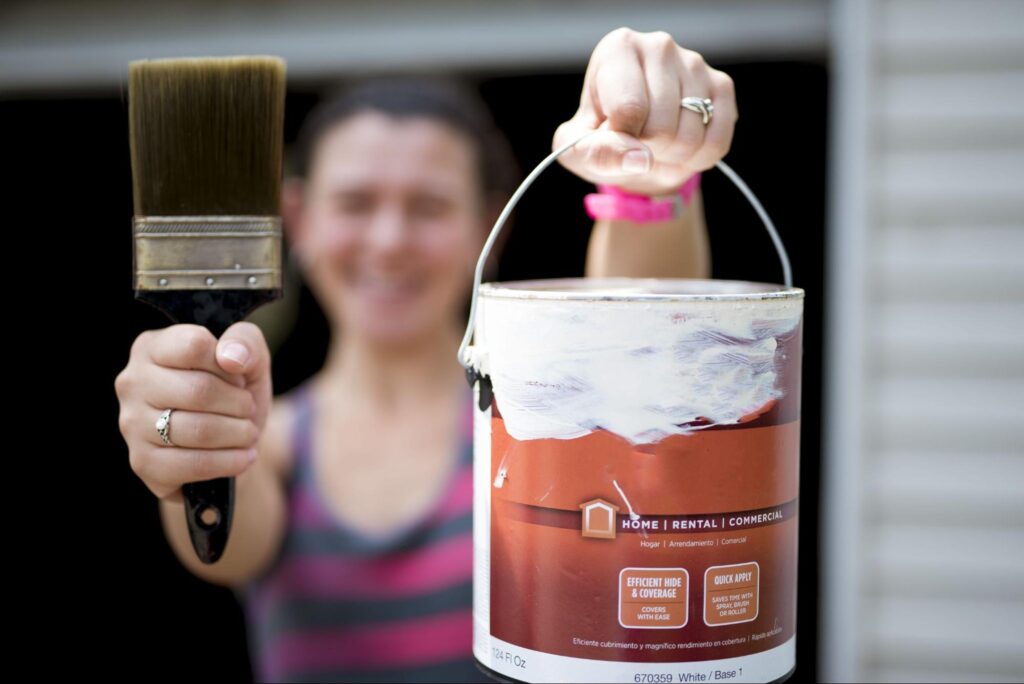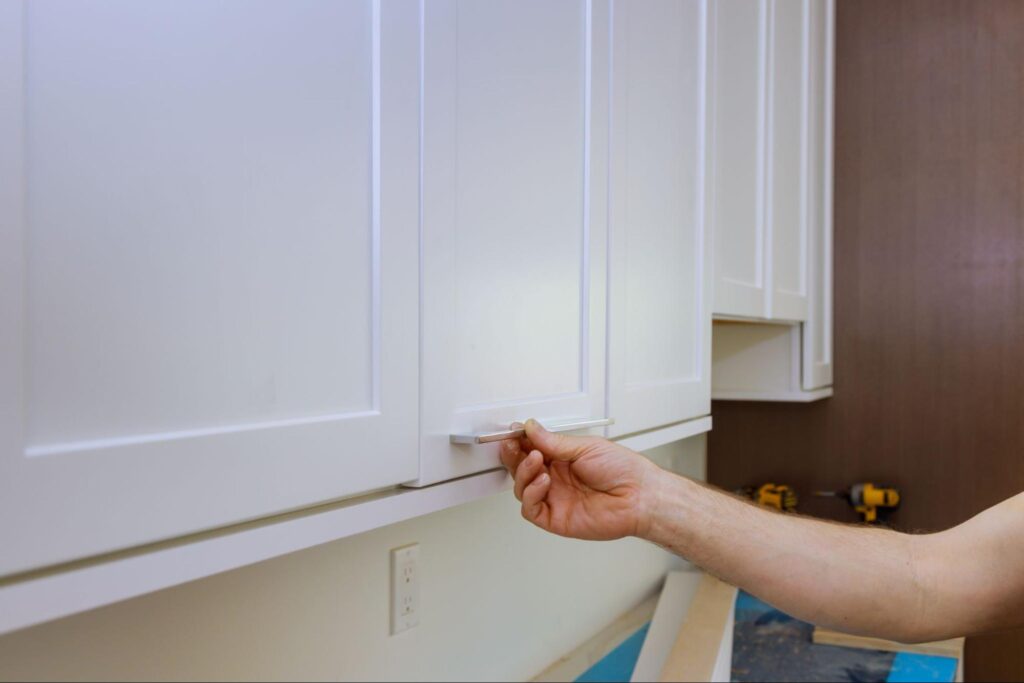
When it comes to updating kitchens, bathrooms, or built-in furniture, few improvements offer the visual impact and affordability of a fresh coat of paint for cabinets. But while the process may appear straightforward, curing time is a critical factor that’s often misunderstood. Curing refers to how long it takes for paint to fully harden—not just dry—and reach its maximum durability. This distinction matters because paint for cabinets endures far more wear than interior paint, facing constant handling, exposure to moisture and grease, and frequent cleaning. Rushing this process can lead to premature damage, fingerprints, peeling, or smudging, all of which compromise the final result. Understanding how paint for cabinets cures—and how long that truly takes—can make the difference between a finish that fails and one that lasts for years.
Understanding Drying and Curing in Paint for Cabinets
A common misconception when working with paint for cabinets is assuming that once the surface feels dry to the touch, it’s ready for use. In reality, drying is only the initial phase, referring to the evaporation of water or solvents. At the same time, curing is a longer chemical process in which the paint fully hardens and bonds to the surface. This curing period can span anywhere from a few days to several weeks, depending on factors such as the type of paint, environmental conditions, the number of coats applied, and the type of cabinet material. Using cabinets before the paint has completely cured can lead to scratches, surface imperfections, or long-term damage that undermines the entire project.
Elements That Affect Cure Time in Paint for Cabinets
The time it takes for paint for cabinets to cure depends heavily on the combination of materials, methods, and environmental conditions used in the project. Let’s look at each factor in more detail:
Type of Paint
The type of paint used plays a significant role in determining how long it takes for cabinets to cure. Water-based acrylics are popular for their low VOCs and easy cleanup, but they typically require three to four weeks to cure fully. Oil-based paints may cure faster under ideal conditions; however, they have longer dry times between coats and more pungent odors. Hybrid enamels and specialty paints, such as alkyd or conversion varnish, are designed for cabinetry and often offer a faster, more durable cure when applied correctly.
Number of Coats and Layers
Each layer of primer, paint, or topcoat contributes to the overall curing timeline. While a surface may feel dry after a day or two, the lower layers often continue to cure for several days or weeks afterward. The more coats applied, the longer the whole system will take to harden and reach its full peak durability.
Humidity and Temperature
Environmental conditions have a direct impact on how paint for cabinets cures. High humidity slows evaporation, which in turn delays both drying and curing, while cold temperatures significantly slow the chemical curing process. Excessive heat or dryness can create a hard surface film too quickly, leading to poor adhesion or cracking underneath.
Ventilation and Airflow
Good airflow supports faster and more even curing of paint for cabinets by helping to clear moisture and solvents from the air. Without ventilation, these elements linger and delay the hardening process. Using fans, opening windows, or running a filtered air purifier (away from dust) can help without disturbing the finish.
Type of Substrate (Cabinet Material)
Different cabinet materials absorb and react to paint differently, which affects cure time. Raw wood may absorb paint more quickly and dry faster but can complicate even curing across the surface. Laminate or pre-finished materials require more prep and primer, often extending the overall time needed to achieve a strong, lasting bond.
When is it Safe to Use Cabinets After Painting?
While it’s tempting to start using freshly painted cabinets as soon as they appear dry, doing so too early can damage the finish and compromise the curing process. Generally, paint for cabinets becomes touch dry within one to four hours, with recoat times ranging from four to 24 hours, depending on the product. However, light use—such as gently opening or closing doors—should be delayed for at least seven to ten days, and complete curing typically takes between 21 and 30 days. During the first week, it’s essential to avoid installing hardware, loading shelves, or using harsh cleaners, as fingerprints, smudges, and surface imperfections are still likely to occur. Patience during this phase ensures a durable, professional-looking result that holds up over time.
Essential Curing Practices for Paint for Cabinets
To achieve the best results and help paint for cabinets cure effectively, there are a few best practices that both homeowners and professionals should follow. These simple steps not only speed up the curing process but also ensure the finish remains smooth, strong, and long-lasting:
Space Out Coats
Don’t rush the recoat timeline. Applying new layers too quickly can trap moisture, extend cure time, or cause bubbling and peeling. Stick to the manufacturer’s recoat schedule—even if the surface feels dry.
Choose Quality Paint
Professional-grade paint for cabinets is specifically formulated to cure harder and faster than generic wall paints. Investing in high-quality products can reduce wait times and result in a more durable, longer-lasting finish.
Control the Environment
If possible, paint in a controlled environment. Maintain a steady room temperature, monitor humidity levels, and ensure consistent airflow throughout the room. Avoid painting during extremely humid or cold weather unless the room can be climate-controlled.
Wait Before Using
Even if the paint looks great after a few days, avoid installing hardware or loading cabinets right away. Respecting the cure time ensures the finish fully hardens and won’t be compromised under regular use.

Tips to Help Paint for Cabinets Cure Faster
While no shortcut eliminates the curing time for paint on cabinets, specific strategies can help accelerate the process safely and effectively. Using fast-drying cabinet paint formulations specifically designed for quick curing can reduce wait times without sacrificing durability. Improving airflow—while being careful to avoid blowing dust onto surfaces—also supports faster evaporation of moisture or solvents. Maintaining an optimal environment with steady temperatures and controlled humidity can further encourage even curing. In professional settings, advanced tools such as curing agents, UV lights, or spray booths may be used to expedite the process.
Signs That the Paint for Cabinets is Completely Cured
Determining whether paint for cabinets is fully cured can be challenging. Even if the surface appears flawless and feels dry, subtle signs, such as tackiness under pressure, lingering odors, or an increased risk of scratching, can reveal that it’s still in the curing phase. A simple way to check is the “fingernail test”—gently press a fingernail into a discreet spot, and if it leaves an impression, the paint hasn’t finished curing. Regardless of the product used or the tools available, allowing enough time for a complete cure is essential for achieving a durable, long-lasting finish that withstands daily use.
Common Mistakes That Delay Curing of Paint for Cabinets
Even with the best intentions, many homeowners and DIYers unknowingly make mistakes that interfere with the curing process of paint for cabinets. These missteps can lead to uneven finishes, prolonged drying times, or long-term durability issues if not avoided.
Using Cabinets Too Soon
It’s tempting to use freshly painted cabinets once they feel dry, but doing so too early can leave fingerprints, smudges, or even dents in the finish. Uncured paint is still soft beneath the surface and needs time to harden before it can withstand daily use fully.
Stacking Items Inside Cabinets
Placing objects inside newly painted cabinets before they’re fully cured can result in pressure marks, stickiness, or imprints on the interior surfaces. Even light items can interfere with curing and ruin the final finish if introduced too early.
Improper Preparation
Skipping essential preparation steps—such as cleaning, sanding, or priming—can prevent the paint from bonding properly to the cabinet surface. Poor adhesion not only slows curing but can also lead to peeling, bubbling, or patchy finishes over time.
Overloading With Coats
Applying too many coats in quick succession traps moisture between layers, causing uneven curing and surface imperfections. Each layer needs time to dry and begin curing before the next is applied to avoid long-term issues.
Skipping Topcoats
A protective topcoat helps seal and harden the finish, improving resistance to moisture and wear. Without it, the paint may stay vulnerable and take significantly longer to cure under everyday conditions.
Why Letting Paint for Cabinets Cure Fully Is Essential
Skipping or underestimating cure time can lead to disappointing outcomes such as chipped edges, sticky surfaces, or uneven sheen. Paint for cabinets is specifically designed to withstand years of daily use, but it must be allowed to harden fully to deliver on that promise. The curing process strengthens the bond between the surface and the coating, enhancing durability, moisture resistance, and cleanability. In high-traffic areas like kitchens and bathrooms, a properly cured finish not only improves the appearance but also ensures the paint performs reliably over time. When done correctly, cabinet paint can maintain its fresh, flawless look for over a decade with minimal upkeep.

Ensuring Long-Term Results With Cured Paint for Cabinets
Understanding how long it takes paint for cabinets to cure—and why that timeline matters—is essential for achieving a smooth, long-lasting finish that can withstand the demands of everyday use. While the surface may appear dry within hours, true curing can take days or even weeks, depending on the type of paint, environmental conditions, and application method. Rushing the process can result in damage that shortens the life of your cabinet finish, but following proper curing practices ensures your hard work pays off with a professional look that lasts for years. Whether you’re tackling a DIY refresh or working with an experienced painter, patience and proper care during the curing phase are key to getting beautiful, durable results.
To learn more about how long paint for cabinets takes to cure, visit our Euro Painting blog.

